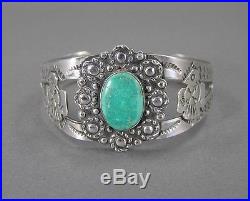
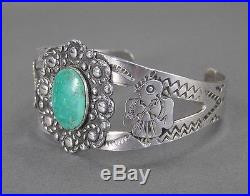
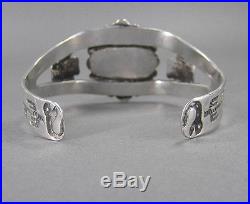
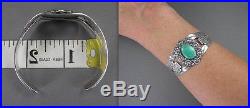
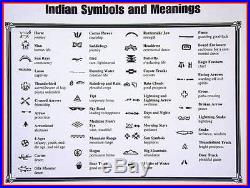
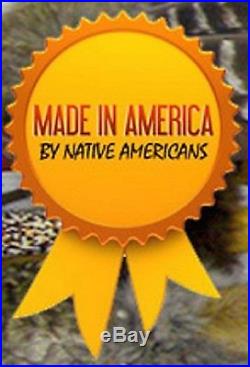

Vintage Fred Harvey Old Navajo Designs Turquoise Sterling Silver Bracelet 1940. Interested in more than one item? Don’t wait we sell more Vintage Fred Harvey Jewelry than any other Jewelry Because it is getting harder to find they quite making it 80+ years ago! Most of our items are Unique One-of-a-Kind and subject to availability. So we do not disappoint you with a possible out of stock item. We guarantee a response within 24 Hours most times it is much quicker. Vintage (1940) Navajo Sterling Silver bracelet with central concho design featuring oval Turquoise stone. This is a really old Harvey era cuff with a beautiful natural Carico Lake turquoise cabochon and stampings that are quirky and wonderful! Check out the snakes on the ends of the cuff. It’s wider than most Harvey cuffs at 1 3/16 inches (30mms) and it’s meant for a smaller wrist at 5 1/2 inches inside circumference. It has a gap of 1 1/4 inches, and it fits my 6 inch wrist comfortable, It is very adjustable by design. The cabochon is 16.5mms by 12mms, and it weighs 27 grams. It’s a nice size cuff that is just great look at it. This lovely piece has Rare Thunderbird, arrows and rain designs stamped into the Sterling Silver. This is a Classic Fred Harvey PIECE FROM DAYS GONE BY. Turquoise Information: Carico Lake. Carico Lake turquoise is named after the location of its mine on a dried up lake bed in a high, cool area of Lander County, Nevada. Its clear, iridescent, spring green color is due to its zinc content and is highly unique and collectible. Carico Lake turquoise is also found in a dark blue-green color with a black, spider web matrix. The Carico Lake mine is primarily a gold producing mine. However, from time to time, the mining company leases the turquoise producing part of the mine to individual miners who are permitted to work that part. The limited amount of Carico Lake turquoise and the limited amount of time allowed to mine it combine to make Carico Lake turquoise a valuable addition to one’s collection. Fred Harvey, the Man, the Era, the Jewelry. Fred Harvey lived during fascinating times and his story tells us much about US transportation, westward travel, railway restaurant cars and the early tourist trade. But what is curious about his legacy is that we Native American jewelry aficionados erroneously use his name to describe a particular type of Native American style tourist jewelry that he personally did not have much to do with and that actually exploded onto the scene after his death. 1876 Fred Harvey entered into a handshake agreement with restaurant operator Peter Cline who ran the eatery at the Topeka, Kansas railway depot to transform the lunchroom to better serve train passengers. After a radical makeover, he offered a 35 cent breakfast which included steak, eggs, hash browns, six wheat pancakes with maple syrup, apple pie and coffee all served in a clean and pleasant atmosphere. 1878 Fred Harvey signed a contract with the Santa Fe Railway (also known as the Atchison, Topeka & Santa Fe or AT&SF) to operate small restaurants (called tea rooms) at railroad depots along the railroads route. 1880 and onward trading post owners (called traders) began carrying tools and supplies for the Native American production of spoons, buttons, squash blossom necklaces, and other jewelry items. 1885 Fred Harvey managed 17 lunchrooms, called Harvey Houses, along Santa Fes line. They were run by Harvey Girls, single, young waitresses in starched uniforms. 1888 Fred Harvey begins to operate dining cars on the Santa Fe Railway. He signed his last contract with the Santa Fe Railroad in 1899. Here is a sample menu from one of the Harvey dining cars. 1899 Fred Harvey Company (notably Indian Jewelry manager Herman Schweizer) supplied pre-cut turquoise and pre-measured silver pieces to traders for the manufacture of lightweight jewelry (aka railroad jewelry) to satisfy the demand of the railroad tourist trade. 1901 Fred Harvey died at age 65. His son, Ford Harvey assumed control of the Fred Harvey Company. 1909 The Thunderbird design was copyrighted by Fred Harvey Co. 1920 Fred Harvey Co. Is the principal concessionaire in the newly established Grand Canyon National Park. 1923 Maisels Indian Trading Post opens in Albuquerque offering coin silver jewelry. 1932 Bell Trading Co began operation. 1935 Maisels merges with Bell Trading Co. And Bell converts to machine manufacturing remaining in business until 1972. Fred Harveys main goal as an entrepreneur was to provide good food and good service for railroad travelers. He was immensely successful at that and essentially developed Americas first chain restaurants Harvey House. One of the most popular tourist pieces was the split shank Pretty Girl bracelet. Even so, it continued to be produced until the mid 1940s or 1950s. The Bell Trading Co. Continued on until the 1970s. The authentic, sometimes called ethnographic, Native American jewelry was made before and during the tourist era and continues to be made today. Using heavier silver and stones, authentic Native American jewelry speaks volumes about its heritage and makers. This product is One of a Kind! Thanks for looking and be sure to check out my store for more selections of authentic Native American jewelry and artifacts! If you like our products, please add me to your. List or consider subscribing to our. For updates on newly listed items, sales and special promotions! We would be happy to consider reasonable offers. This Vintage Jewelry is an Excellent Investment and does Appreciate in Value. Compare your own financial investments over the past ten years to investments in pieces of Native American Indian and Mexican art and antiques! We understand the true value and nature of hand crafted Indian art. And, we recognize that it is important to know that the artist is truly a member of a Native American tribe. So, to ensure you that this is the real deal, a. Has been included with this item. CERTIFIED AUTHENTIC NATIVE AMERICAN. IMPORTANT – PLEASE READ. I dislike having to do that, so please pay promptly. We are aware of your concerns in regards to the condition of your art work upon arrival. We use safety and care every step of the way in packing and sending your Kachina to you. International Buyers Please Note. These charges are the buyers responsibility. We aim for five star service and want you to be happy – period. GUARANTEE: Your satisfaction is unconditionally guaranteed. International Buyers are willkommen, bienvenue, ???? We fell in love with Native American jewelry many years ago and really appreciate the true craftsmanship that goes into the making of a piece of genuine Native American jewelry art! That is why we chose to partner up with some of the oldest and most reputable Trading Posts in the Southwest who deal directly with the Native American artisans to bring you a large selection of authentic Native American products. These artisans come from the Navajo, Zuni, Hopi and affiliate tribes on the reservations all of which our close to our home and office, so you can be assured that all our Native American products are authentic! Most of our items are One-of-a-Kind and subject to availability. We try to keep our listings up to date, but may occasionally miss one. In some cases, we can have one custom made with a two week lead time. If you like our products, please add me to your FAVORITES list. This is very important to us. It lets us know that you have received item and are happy with it. As soon as we get feedback, it leaves you feedback in return. We are always adding new items. The item “Vintage Fred Harvey Old Navajo Designs Turquoise Sterling Silver Bracelet 1940″ is in sale since Monday, January 16, 2017. This item is in the category “Jewelry & Watches\Ethnic, Regional & Tribal\Native American\Bracelets”. The seller is “elkcreektradingllc” and is located in Kykotsmovi Village, Arizona. This item can be shipped worldwide.
- Jewelry Type: Bracelets
- Metal: Sterling Silver
- Metal Purity: .925 Sterling
- Main Stone: Turquoise
- Tribal Affiliation: Navajo
- Signed?: Unsigned
- Origin: SW USA
